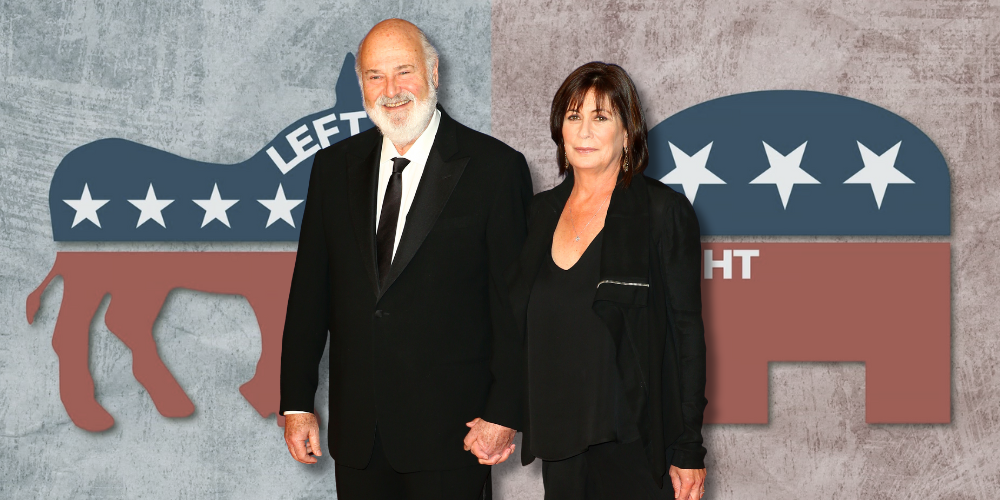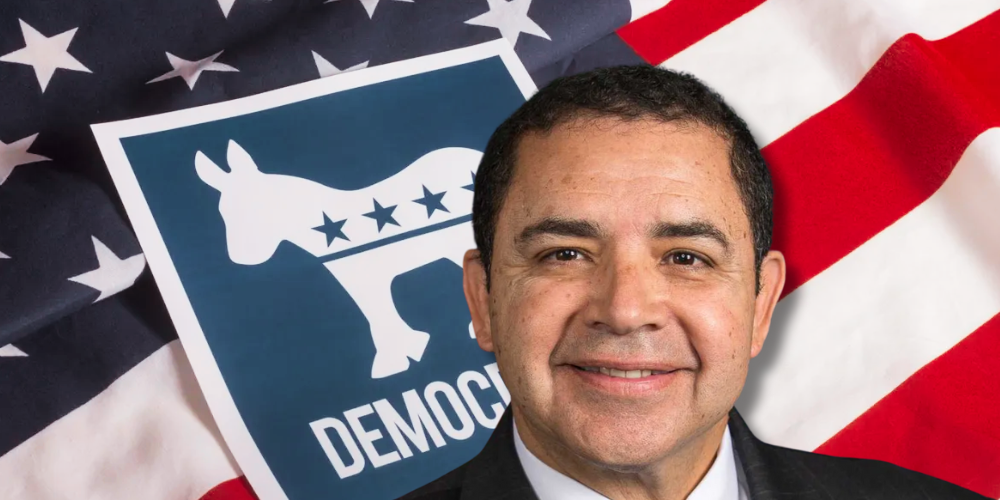President Trump’s recent statements about ongoing diplomatic efforts with North Korea revived tired and predictable criticism from all sides. The establishment insisted, yet again, that Trump was legitimizing a racist, totalitarian, and murderous regime.
The inconvenient truth is that America’s business-as-usual foreign policy towards North Korea has been impotent for decades.
Such responses are shortsighted at best, and disingenuous at worst.
The inconvenient truth is that America’s business-as-usual foreign policy towards North Korea has been impotent for decades. Republican and Democratic administrations alike have allowed the Kim dynasty to become an existential threat to the Republic of Korea, a very real threat to the stability of the North Pacific region and, more recently, a threat to the United States itself.
As a result of this decades-long failure, a Second Korean war (or a resumption of the first one, depending who you talk to) would likely be the worst thing to happen to the world in our lifetime, our parents’ lifetime, and possibly our children’s lifetime.
President Trump understands this.
That’s why he’s playing nice with Kim Jong Un.
And – despite the warnings of experts – it appears to be working.
A POTENTIAL HELLSCAPE
Imagine, if you will, huge swaths of an exceptionally modern metropolis of 25 million people in ruins, with hundreds of bombed-out and smoldering skyscrapers, reminiscent of 9/11 but amplified by orders of magnitude.
Welcome to Seoul in the first days of a modern war on the Korean Peninsula.
Thousands who survive the initial bombardment of several thousand metric tons of artillery and rocket bombardment would litter the streets for miles. Some would pile themselves into the city’s bomb shelters, subway stations, and underground shopping malls, where they go into violent convulsions and foam from their mouths as they suffocate from the nerve gas that followed the artillery. Millions of Koreans and tens of thousands American troops would die in weeks – perhaps even days. A global economic and security crisis would ensue.
That’s without a nuclear exchange.
[caption id="attachment_180112" align="alignnone" width="1920"] Seoul. Creative Commons.[/caption]
Seoul. Creative Commons.[/caption]
WAR IS NOT AN OPTION
One of the biggest problems the US military has faced for decades is what to do if a full-scale conflict erupts on the Korean Peninsula. None of the options are pretty. Millions would die.
US and ROK forces would inherit the greatest humanitarian crisis in modern history: 25 million starving Koreans who’ve been brainwashed since birth to genuinely believe the Kims are gods and that American soldiers are cannibals.
The former Deputy Commander of all American forces in Korea, retired Lt. Gen. Jan-Marc Jouas, wrote in a letter to Congress in 2017 that even a limited attack on North Korea would be perceived as a declaration of full-scale war by the North, and that the United States’ 28,500 troops stationed in South Korea would constitute a speed bump compared to nearly seven and a half million soldiers in the Korean People’s Army (KPA). It would take many weeks (at best) to mobilize a larger force to beat them back. Without America “going nuclear,” the outcome is uncertain.
Of course, Much of the KPA is ill-equipped, poorly trained, and not even well-fed. They’d also face the Republic of Korea’s (ROK) formidable military, but they too would most likely be overwhelmed; quantity has a quality of its own. Unspeakable carnage would ensue.
For the sake of argument, let’s assume US and ROK forces, after suffering heavy casualties, win the day and defeat the KPA, something that would only be achievable through a full-scale invasion of North Korea. In this scenario, the use of weapons of mass destruction (nuclear, chemical, biological) by both sides would be on the table. In fact, even without a North Korean nuclear capability, it’s a very safe assumption that extensive chemical warfare would come into play.
From there, assuming that allied forces capture, kill, or otherwise neutralize the DPRK’s leadership, defeats the KPA, and unifies the Korean peninsula under the ROK flag, what would happen next?
US and ROK forces would inherit the greatest humanitarian crisis in modern history: 25 million starving Koreans who’ve been brainwashed since birth to genuinely believe the Kims are gods and that American soldiers are cannibals. Our ill-fated nation-building efforts in Iraq would be child’s play in comparison, and that’s before taking into account that China and Russia, the DPRK’s big brothers to the north, would have zero tolerance for a US-friendly democracy on their borders. The possibility of a global conflict, a third world war, would become a very real possibility.
Conflict on the Korean peninsula is a horrific “lose-lose” scenario for everyone involved. Leaders in both the east and the west are keenly aware of this, hence the decades-long stalemate and unhealthy status-quo that only metastasized even further with the advent of North Korea’s nuclear capability.
What’s a leader of the free world to do?
[caption id="attachment_180113" align="alignnone" width="1920"] President Donald J. Trump meets North Korean leader Kim Jong Un[/caption]
President Donald J. Trump meets North Korean leader Kim Jong Un[/caption]
THE ART OF THE DEAL
The odds of a full-scale conflict on the Korean Peninsula might seem relatively small, but it remains an uncomfortably real prospect. And yet, for decades now, we’ve been inching closer and closer to such a catastrophe. All the tough talk, annual military exercises, sanctions, and saber-rattling has done little other than maintain the status quo – except, of course, when it comes to North Korea’s nuclear program, which now appears to be at least somewhat viable.
President Trump knows there are only two people that matter in our scenario: Kim Jong Un and Donald Trump.
What was needed to end this stalemate? Personal relationships and a top-down approach, eschewing the countless committees of foreign policy “experts” who’ve done little other than maintain a deteriorating status quo.
President Trump knows there are only two people that matter in our scenario: Kim Jong Un and Donald Trump. In order to make any progress toward a resolution on the Peninsula, he must establish a personal relationship with Kim, as unsavory as that might be to the global establishment.
No one questions Kim’s appalling character; he’s one of the most murderous and evil people on the planet. Still, anyone who harangues Trump for “being friendly” with the worst dictator alive in order to achieve critical strategic goals isn’t being serious.
So what does this “personal relationship” accomplish? By becoming “friends” with Kim, President Trump sufficiently stroked Kim’s ego and removed his motivations for aggression, particularly nuclear aggression. Kim even “apologized” to Trump after a series of short-range missile tests.
THINK BIG. HAVE LEVERAGE.
I like thinking big. I always have. To me it’s very simple: if you’re going to be thinking anyway, you might as well think big. Most people think small, because most people are afraid of success, afraid of making decisions, afraid of winning. And that gives people like me a great advantage. (The Art of The Deal)
Since 1953, there’s been only one thing the Kim dynasty truly cares about: survival. For decades, they’ve known there’s no realistic path to reuniting the two Koreas under the DPRK flag; they’ve never had the capability, especially when South Korea has the United States behind them. Why do you think North Korea hates America so much.
Previous US policy towards North Korea focused on “thinking small,” offering them desperately needed foreign aid through food shipments, strongly-worded speeches, negotiations that go nowhere, and weak agreements that North Korea inevitably reneges on. Our success in these halfhearted efforts have been predictably dismal.
The Kims might be staggeringly cruel, oppressive, and evil, but they’re not stupid. They’ve defied the world for the better part of a century and have absolutely no intention of sharing power with anyone.
Survival and preserving the status quo has been North Korea’s sole focus, until President Trump came along and “shook the box,” getting Kim to “think big” by offering him something even better:
Trump is offering Kim something more than simply regime preservation: a realization of Kim’s “beautiful vision” for the future.
Further, Trump regularly reminds Kim of his leverage. He makes it clear that this “beautiful vision” of prosperity, security, and personal glory for Kim can only be made possible through cooperating with the President:
Trump is right. Kim should not want to disappoint his “friend” in the White House.
THE BEST PATH FORWARD
Regardless how these future negotiations shake out, one thing is for certain: President Trump has made more progress with North Korea in the past two years than previous administrations have in at least two decades. The approach he’s taking is the right one.
At a minimum, Trump has psychologically disarmed Kim; North Korea is unlikely, in the short-term, to trigger an unspeakable holocaust in Asia.
Trump’s North Korea policy is unconventional, disruptive, and effective.
Just like the man himself.
Tom Sauer is a former US Navy EOD Officer who spent the better part of his career in the Western Pacific. In addition to his work in Special Operations, he authored portions of America’s Operation Plans (OPLANS) in the event of war with China and North Korea. He is a graduate of the US Naval Academy and holds master’s degrees from UCLA and the National University of Singapore. Follow him on Twitter: @thomasbsauer





